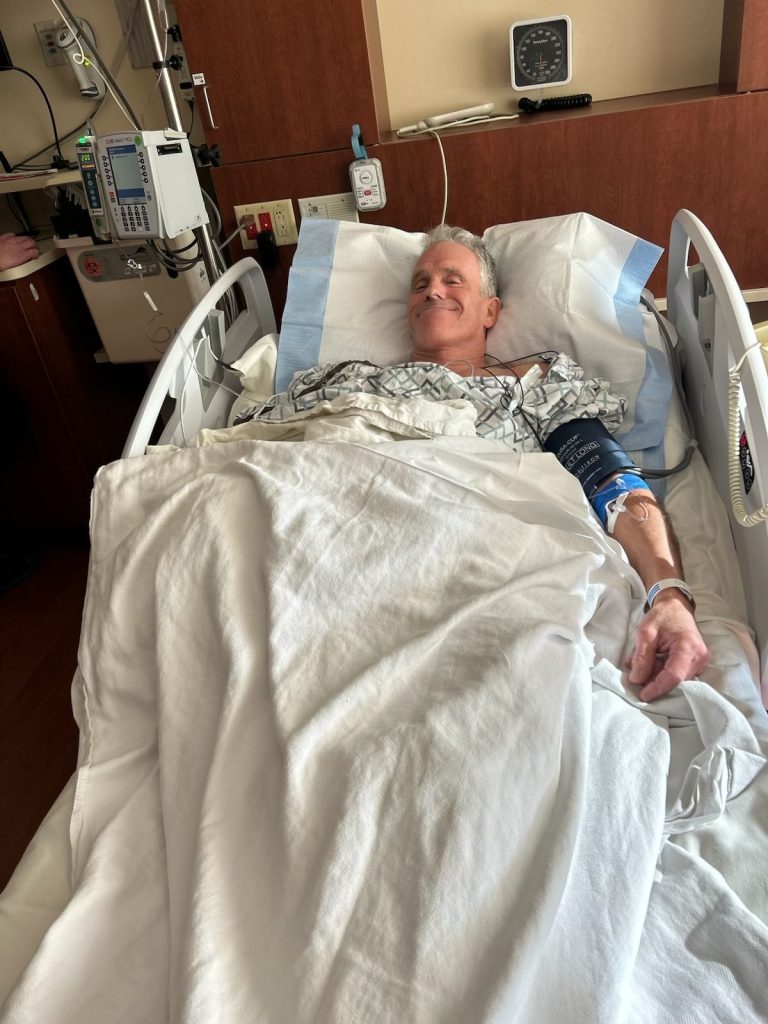Rotator cuff tears are common, especially as we age. Determining the treatment course requires careful consideration.
Dr. Nickolas Linkous, Shoulder, Sports Medicine and Arthroscopic Surgeon, ThedaCare Orthopedic Care
More than 2 million Americans experience a rotator cuff tear each year. That’s a lot of people unable to lift their kids or grandkids, carry their groceries, or exercise without experiencing pain or discomfort.
But rotator cuff tears aren’t all the same. In fact, the condition and its treatment vary depending on the individual’s age and severity of symptoms, says Dr. Nickolas Linkous, a Shoulder, Sports Medicine and Arthroscopic Surgeon with ThedaCare Orthopedic Care.
“Rotator cuff tears are common, especially as we age,” Dr. Linkous says. “Determining the treatment course requires careful consideration.”
If you receive a rotator cuff tear diagnosis, it’s important to learn more about your condition. That way, you can understand the severity of your injury and your treatment options. Here’s what you need to know.
What’s a Rotator Cuff Tear?
Your rotator cuff consists of four muscles in your shoulder that attach to your humerus in a group of tendons. It stabilizes your shoulder and helps you move your arm. It also provides strength above your head and away from your body.
Because you rely on your rotator cuff for so many movements, it’s easy to injure or tear it. Rotator cuff tears fall into two main categories:
Partial tear: a tear involving one or more of the rotator cuff tendons with at least some of the tendon still attached to bone. These tears may heal without surgery depending on the extent of the injury.
Full thickness tears: a tear involving one or more of the rotator cuff tendons with complete detachment and sometimes retraction from the bone. These tears do not heal without surgery, but symptoms and function may improve with non-operative treatment.
Symptoms of rotator cuff tears include:
Pain that keeps returning, especially with overhead activities
Discomfort that prevents you from sleeping on your injured side
Limited ability to move your arm
Muscle weakness
Rotator cuff tear severity varies and depends on several factors, including which tendons are torn, retraction, and how the injury happened.
If you’re experiencing these symptoms, you may choose to begin with a non-operative sports medicine physician or a sports medicine surgeon. To investigate a rotator cuff tear, a doctor will often recommend starting with an X-ray. Depending on your symptoms, you may also need an MRI.
Rotator Cuff Treatments
After your doctor diagnoses your torn rotator cuff, they’ll analyze your images and determine a plan for treatment.
“We tailor treatment plans to each individual’s needs,” says Dr. Ryan Wagner, a Non-Operative Sports Medicine Specialist with ThedaCare Orthopedic Care. “Rotator cuff tears don’t always need to be surgically repaired. If you can function without a lot of discomfort, we can offer non-operative treatment options.”
Non-operative treatment options include rest, activity modification, and home exercise programs. Your doctor may also recommend physical or occupational therapy, medications, or therapeutic injections. In addition, you may benefit from pain management procedures including radiofrequency ablation or peripheral nerve stimulation.
“As pain management specialists, we pride ourselves on offering something to every individual who walks in the door, no matter where they are in their journey with shoulder pain,” says Dr. Christina Brooks, a Pain Management Specialist with ThedaCare Orthopedic Care.
If these interventions aren’t effective and you continue to experience pain — or if you have a severely torn rotator cuff — surgery may be an option.
Rotator Cuff Surgery
Determining whether you’re a good candidate for surgery depends on many factors.
“It’s a long discussion catered to the individual,” Dr. Linkous says. “I look at whether it’s a traumatic, acute tear, or if it’s more of a chronic, insidious issue. Duration of symptoms and the individual’s age are also important factors.”
If a young individual has an acute, traumatic rotator cuff tear, a surgeon will likely recommend fixing it promptly. But as people get older, it gets more complex. By ages 70 to 75, 50% of people have tears.
For those who are good candidates for surgery, the procedure itself is simple.
“We do the surgery arthroscopically through four or five small incisions, and we use the assistance of a high-definition camera,” Dr. Linkous says. “This approach helps speed recovery time and reduce the size of patients’ surgical scars.”
While the surgery may be easy, the recovery process is quite active. Patients must complete at least three months of physical therapy and home exercises to help their recovery progress smoothly.
Regardless of whether you’re a candidate for rotator cuff surgery, know that the ThedaCare Orthopedic Care team will help connect you to treatment options that best meet your needs.
Experiencing shoulder pain?
The post Rotator Cuff Tear: A Common and Complex Condition appeared first on ThedaCare.

Leave A Comment